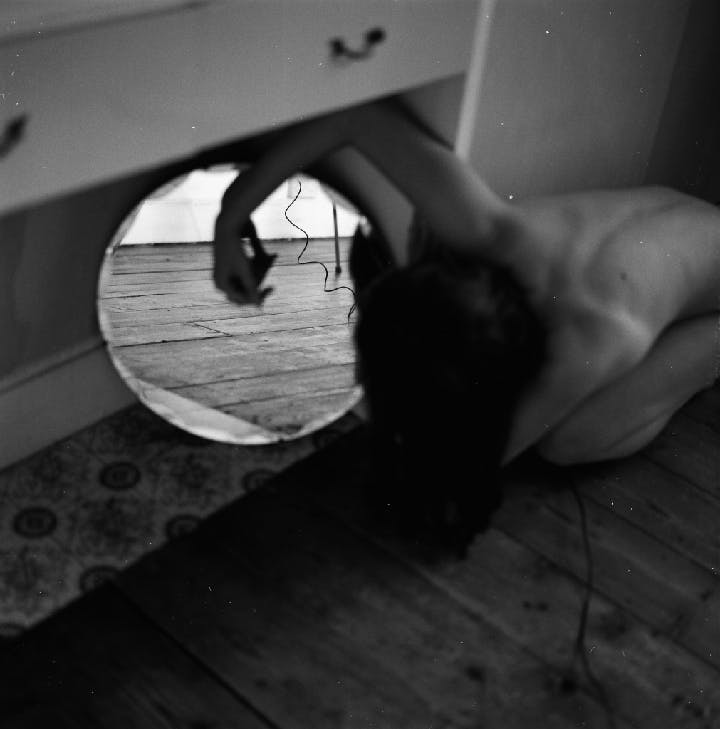Winter 2014
Art imitates art: the rise of film mirrored that of the novel
– The Wilson Quarterly
Novels, like movies, weren't always a medium for serious, creative expression.
In today’s popular imagination, post–World War II America was conservative and consumerist, repressed and isolationist. Yet it gave rise to a slew of literary greats, an intellectually fractious bunch who nonetheless managed to agree on the importance of the novel. They also wondered if it would survive, and they weren’t the only ones.
“Critics and sociologists of the fifties were preoccupied with the effects of mass culture and commercial entertainment on traditional culture,” writes Morris Dickstein, professor of English and theater at the City University of New York Graduate Center, “and this concern parallels the current alarm about the impact of new media on literary culture.”
According to critic Lionel Trilling, literature, particularly the novel, provided a much-needed foil to the social engineering ethos of the 1930s, which took an oversimplified, abstract, and mechanistic approach to meeting human needs. The novel, in contrast, faithfully reflected the complexity of experience. For other intellectuals, such as Norman Mailer, the novel was an answer to the anonymous mass death of World War II — the Nazi concentration camps, the atomic bomb. The form celebrated the individual while also examining, as Dickstein puts it in Raritan, “the irrational depths of the psyche, which the war had luridly exposed.”
The novel had not always enjoyed such lofty status. “With its catchall content, serviceable prose, piquant characters, and relentless emphasis on what happens next, it was the upstart of the arts, the wild child, rowdy, undisciplined, and crowd pleasing,” Dickstein writes. Daniel Defoe’s Moll Flanders unrepentantly misbehaved. Charles Dickens’ page-turners were too entertaining to be considered high art.
With their insistence on fidelity to lived experience, the works of 19th-century realists Gustave Flaubert and Henry James pushed critics to concede that novels could indeed be art. Postwar writers looked to these and other forebears for direction. James Baldwin turned to James, Ralph Ellison to James Joyce, Mailer to Ernest Hemingway and John Steinbeck, among others. “Is there another literary generation that struggled more openly with its predecessors?” Dickstein asks. While English writers simply strove to publish, “Americans dreamed of some definitive work that would light up the national consciousness.”
Novelists struggled under the weight of this “grail-like pursuit” of the Great American Novel. Ellison never produced a second novel after his acclaimed Invisible Man (1952), and Mailer’s planned eight-volume opus splintered into shorter works and autobiographical miscellany.
Writers were also anxious to resist mass culture’s demand for easy consumption. Some of the modernist aesthetic stems from this worry. Practitioners such as Joyce and William Faulkner produced famously inscrutable novels — ones only the strongest readers had the endurance to read to the end. (“While all art is in some sense demanding,” Dickstein drolly observes, “only the legacy of modernism makes this degree of engagement the precondition for major art, which, after all, can be ingratiating as well as exacting.”)
When readers turned away from literature, some authors blamed the distractions offered by mass media — particularly radio. “Reading skills,” Gore Vidal sniffed in 1967, “continue to decline with each new generation.”
Meanwhile, movie audiences were finding the pleasures they’d once enjoyed in film’s parent, the novel — the two forms sharing much in terms of storytelling and “the rich elaboration of individual characters.” By the 1950s, film was the crowd pleaser of the arts, and film and fiction became both allies and rivals. Fiction was easily — and often wonderfully, as in The Grapes of Wrath — adapted to the silver screen. Movies influenced writers to focus on action and dialog, and away from psychological analysis. Baldwin and Philip Roth sold more books when they wrote about sex — going toe to toe with directors who had also learned to push the envelope.
Modernist directors such as Ingmar Bergman, Federico Fellini, and Luis Buñuel ushered in a golden age of art cinema. They, in turn, inspired a subsequent generation of gritty filmmakers, among them Robert Altman and Martin Scorsese. Perhaps inevitably, movies were following the trajectory of the novel, going from lowbrow to high — and losing audience in the process.
“The contraction of both fiction and film, the decline of their popular appeal, was in part an outgrowth of the extravagant hopes that had been invested in them,” Dickstein writes, citing Trilling again, who noted that “the overvaluation of art is the beginning of the end of art.”
But Dickstein isn’t writing a eulogy for either novels or films. Anxieties about the distractions of the digital age notwithstanding, “we still need stories to illuminate our condition, however they may come our way.”
THE SOURCE: “The Moment of the Novel and the Rise of Film Culture” by Morris Dickstein, Raritan, Summer 2013. Photo courtesy of Flickr/Leanne Surfleet
